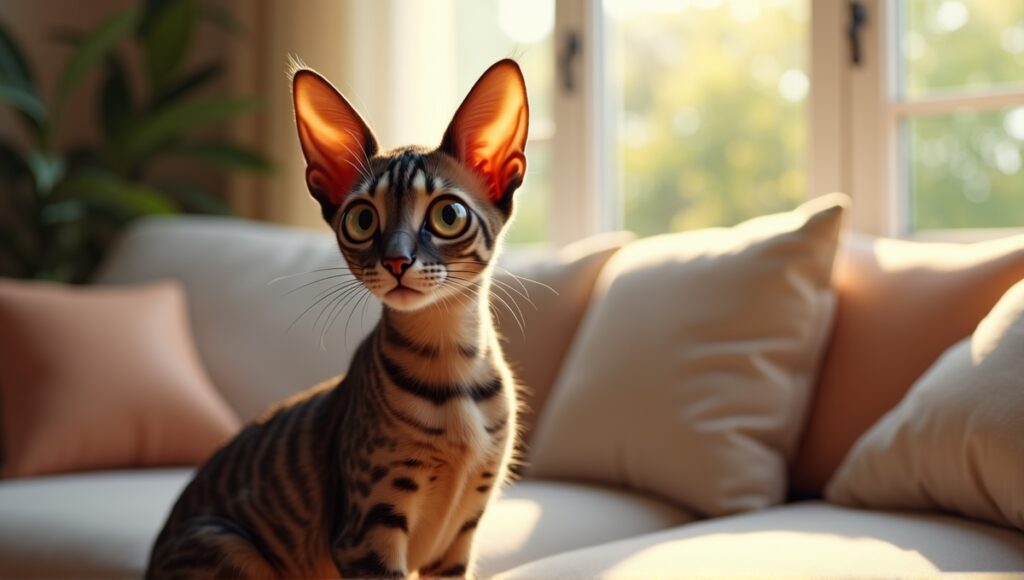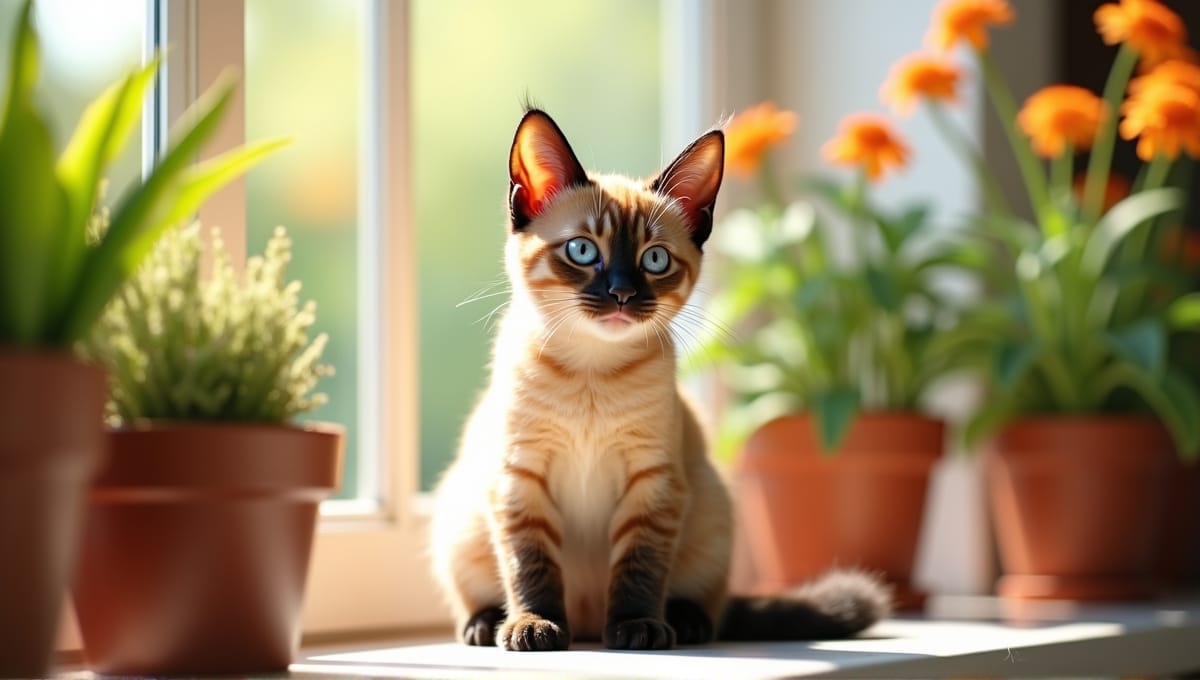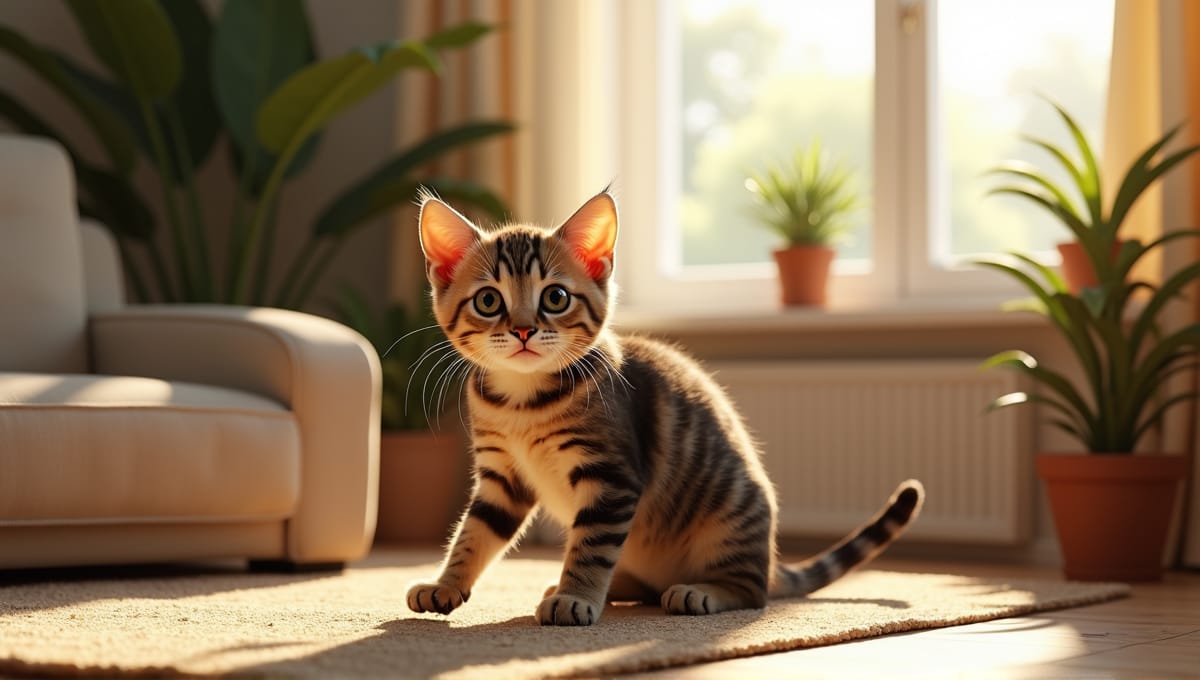As a cat expert who has encountered just about every breed, Oriental Shorthairs stand out to me as something special. These slender, smart cats have won me over after years of experience with them. If you’re wondering whether their unique appearance and traits are the right choice for you, let’s take a look at what makes them unique. Then you can determine whether an Oriental Shorthair is an ideal fit.
Distinctive Features of These Sleek Felines
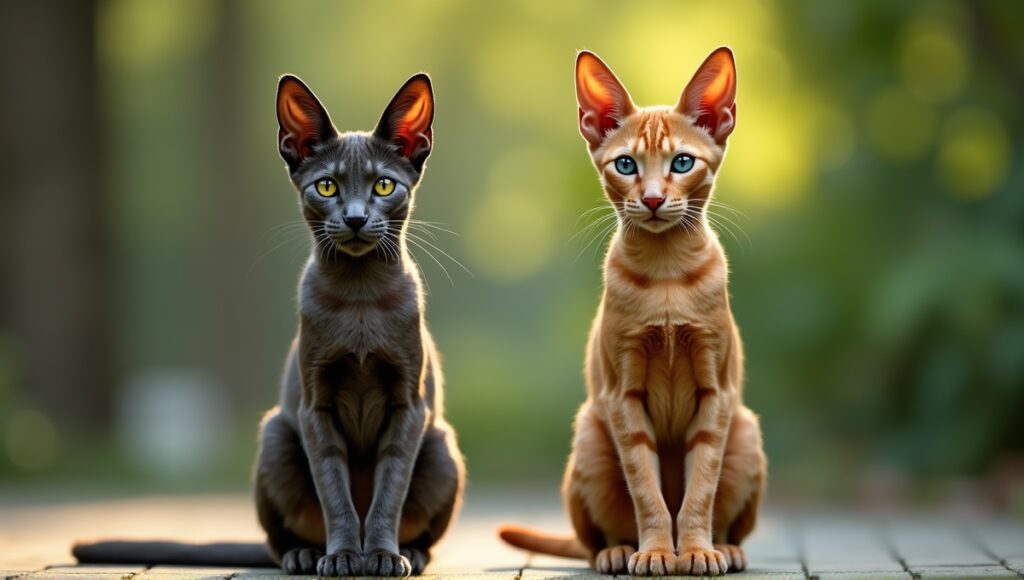
The Oriental Shorthair is a stunning breed. Their head is wedge-shaped and their large almond eyes immediately capture your attention. These cats have a long, slender body with a slightly muscular physique. Their large, pointed ears are another key feature. They have a sleek short coat that comes in over 300 different colors and patterns. It’s truly incredible!
Common color patterns include:
- Solid colors (blue, black, white, and cream)
- Tabby patterns
- Bi-color options
- Smoke and shaded coats
Size varies depending on gender. Males tend to weigh between 8 to 12 pounds. Females are even smaller, rarely exceeding 8 pounds. Their thin physique adds to their overall elegance.
I’ve been to several cat shows, and the Oriental Shorthair never disappoints. Their graceful, delicate movements are a sight to behold. And the array of coat colors is a feast for the eyes. Whether you prefer a classic black cat or something more unique like a cinnamon smoke, you’ll find it all within this breed. Plus, each cat has its own unique look.
Personality and Temperament of Oriental Shorthairs
Oriental Shorthairs are intelligent little cats. They’re endlessly curious. These cats are on a mission to explore every corner of your house. They’re also very active and playful, even as adults.
You’ll build a strong connection with an Oriental Shorthair. They’re loyal to their people. You can expect your cat to walk around the house with you while chatting. They’re quite talkative. You’ll hear plenty of meows, chirps, and trills.
Oriental Shorthairs require a lot of mental stimulation. They like to participate in family activities. These cats are also very social, so they don’t do well if left alone for long periods. Fortunately, they’re very adaptable if they receive enough attention.
I’ll never forget fostering an Oriental Shorthair named Luna. She was determined to “help” me with whatever I was doing. Whether I was making dinner, reading, or using my computer, Luna was right there with me offering her two cents. Her playful behavior always brought a smile to my face.
History and Origin of the Oriental Shorthair Breed
Oriental Shorthairs have an intriguing origin story. They originated from Siamese cats in the 1950s when breeders desired a similar body shape but with a wider variety of colors. To achieve this, they crossed Siamese cats with other breeds, such as the American Shorthair and the Russian Blue.
Over time, the breed received recognition.
- The CFA accepted the Oriental Shorthair to championship status in 1977,
- and the GCCF followed suit in 1997.
Today, Oriental Shorthairs are more popular than ever. They offer the same great personality as a Siamese in a wide range of colors. As a result, I’ve noticed more Oriental Shorthairs at cat shows. It’s great to see more people discover this breed.
Medical Issues and Longevity of Eastern Short-Coated Felines
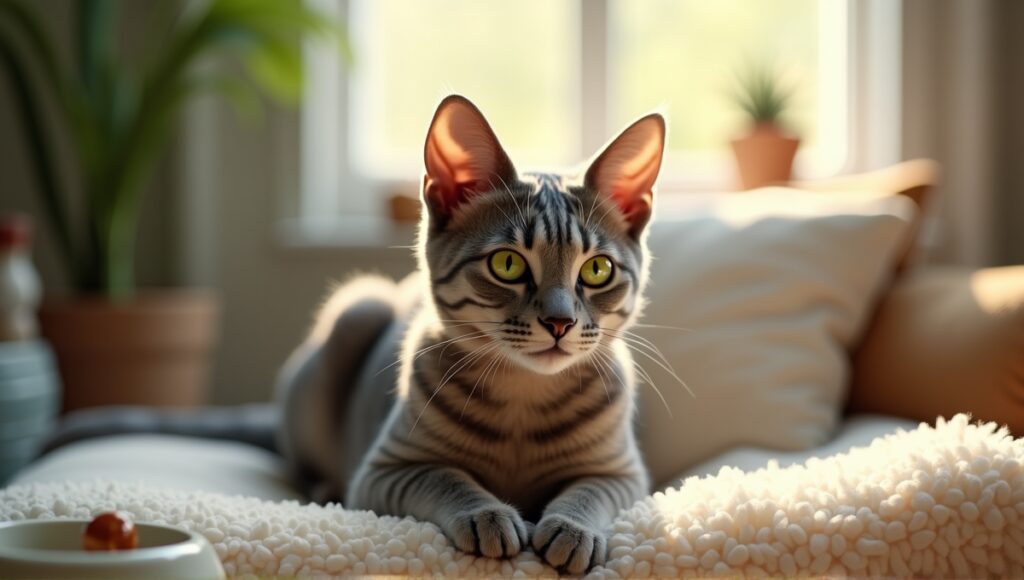
Oriental Shorthairs have an average lifespan of 12 to 15 years, though some might live even longer with excellent care. Like any breed, their health is influenced by genetics, diet, and the environment.
The most common health problems in Oriental Shorthairs are:
- Hepatic amyloidosis
- Pica
- Progressive retinal atrophy
Research indicates hepatic amyloidosis most frequently occurs from 1 to 7 years of age. Pica is also more prevalent in Oriental breeds than other breeds. And signs of progressive retinal atrophy usually appear at 1-2 years old.
Regular vet visits are essential. This helps diagnose issues before they become serious. I always recommend:
- Annual check-ups
- Blood work
And don’t forget to stay up to date on vaccines and parasite prevention.
In my experience, a healthy diet and regular exercise also help prevent most health issues. Keep your Oriental Shorthair at a healthy weight. And provide plenty of mental stimulation to prevent stress-related health problems.
Grooming and Care Requirements for Oriental Shorthairs
Oriental Shorthairs are relatively low maintenance as far as grooming goes. Their coats are short and don’t mat easily, so weekly brushing is typically sufficient to keep their coat looking sleek and reduce shedding.
You won’t need to bathe them often unless they step in something particularly messy. If you do bathe them, use a mild cat-specific shampoo. Trim their nails every 3-4 weeks. Don’t overlook the importance of dental care! Regular tooth brushing can help prevent dental issues.
Clean their ears and eyes as necessary. Use a damp, soft cloth to wipe away any dirt. These cats are active and require plenty of exercise, so provide:
- climbing trees
- scratching posts
- plenty of interactive toys
Keep in mind that mental exercise is just as important as physical activity. Puzzle feeders and training sessions are great ways to challenge their intelligent minds. Personally, I’ve found that training Oriental Shorthairs to do tricks is a fun way to bond with them.
Nutrition and Feeding Guidelines for Oriental Shorthairs
Oriental Shorthairs require a high-quality balanced diet. Opt for cat food that features meat as the main ingredients and avoid foods packed with fillers or by-products. Wet food is also beneficial to help them stay hydrated.
- Feed them on a regular schedule. Most adult cats do best with two meals per day.
- Controlling portions is important as these cats can easily become overweight.
- Adjust the quantity based on the cat’s age, body condition, and activity level.
Kittens, seniors, and pregnant cats all have different nutritional requirements, so talk to your veterinarian about the best course of action. Always have fresh water available. Some cats like drinking out of a fountain.
It’s also okay to give them some treats, but limit treats to just 10% of their daily caloric intake. Avoid giving them any human food, and remember that some common human foods are toxic to cats (like chocolate, onions, or grapes).
One of the Oriental Shorthairs we adopted had a food allergy, so we had to be extra careful with her diet. It’s a good reminder to keep an eye out for any signs of food sensitivities in your cat.
Bringing Home an Exotic Feline: Key Factors to Weigh
When acquiring an Oriental Shorthair, consider reputable breeders or rescue organizations.
Inquire about health clearances and how the cats are socialized.
Budget for the cost. Oriental Shorthair kittens from reputable breeders typically range from $600 to $1,500.
Also consider recurring expenses.
Factor in the cost of food, vet visits, supplies, and possibly unexpected expenses.
Cat-proof your home.
Remove anything dangerous and create a safe room for your new cat.
If you have existing pets, introduce your Oriental Shorthair slowly to them.
When properly introduced, Oriental Shorthairs usually do well with other animals.
They’re very social and enjoy having other animal friends.
Keep in mind that Oriental Shorthairs are active and talkative.
Therefore, ensure you are prepared to care for a high-energy, talkative cat.
If you’re hoping for a more calm cat, you might also look at other breeds of cats.
Chinese cat breeds are another excellent option, and they offer unique characteristics compared to the Oriental Shorthair.
Closing Remarks
Oriental Shorthairs are interesting cats with some distinctive characteristics. Their head shape, large ears, and variety of coat colors set them apart. These are intelligent cats that form strong attachments with their people. They require basic grooming and affection to keep them happy and healthy. If you’re thinking about an Oriental Shorthair, keep in mind that they are active cats that tend to be talkative. In return, you’ll enjoy an affectionate and lively feline for many years.


